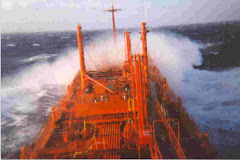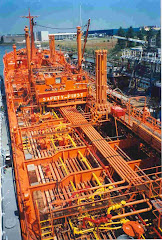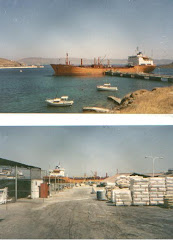The recent Navios acquisition of three Capesize units seized by Commerzbank may set a precedent for similar deals to come. Current economic conditions are stressing shipping companies. As time goes on, senior lenders will be increasingly pressed to cleanse non-performing loans from their balance sheets. An obvious means to reduce losses is to shift assets to stronger owners.
Private companies have a financing advantage over private companies. They can raise capital in public markets. They have many options like issuing more shares, doing a preferred issue or going to the corporate bond market.
Navios, of course, has its own share of problems with charter party defaults and downside earnings announcements and it is not the most transparent company, but recently Neuberger Berman increased their share in the group. Generally analysts like Omar Nokta of Dahlman Rose have become bullish again on the dry bulk sector.
The Capesize sector has performed well in this year's improvement on the BDI. The rate volatility attracts owners to this size. There are only a few major cargoes for the larger bulkers. When market orders rise, rates surge. When they wane, rates collapse. The effects are multiplied by port congestion and longer voyages in boom times. The profitability has been very good the last few years before the crash. These vessels in the Navios deal come with attractive charter commitments.
Dry bulk is very dependent on continued China growth. The issue is whether the recent increase in demand is sustainable. I believe that the surge in dry bulk rates this year is due to Chinese inventory stockpiling. The Chinese renegotiated supplier rates with substantial discounts. They have been more successful than the US in their stimulus program. Government easy money policies lead the way to commodities speculation regardless of demand in the underlying economy.
On the other hand, I do not see a lot of evidence yet that Chinese export markets are coming back. After all, Europe is really in the doldrums and the US consumer markets have not turned around. China has a lot of excess capacity. They will have to restructure. They cannot go on indefinitely by stimulus money. If there is a sluggish recovery in 2010, China may have a growing problem of non-performing loans. Meantime, the dry order book is still big despite cancellations.
All in all there is a high probability for future distressed asset deals. Publicly listed companies will be favored players for many senior lenders.
Private companies have a financing advantage over private companies. They can raise capital in public markets. They have many options like issuing more shares, doing a preferred issue or going to the corporate bond market.
Navios, of course, has its own share of problems with charter party defaults and downside earnings announcements and it is not the most transparent company, but recently Neuberger Berman increased their share in the group. Generally analysts like Omar Nokta of Dahlman Rose have become bullish again on the dry bulk sector.
The Capesize sector has performed well in this year's improvement on the BDI. The rate volatility attracts owners to this size. There are only a few major cargoes for the larger bulkers. When market orders rise, rates surge. When they wane, rates collapse. The effects are multiplied by port congestion and longer voyages in boom times. The profitability has been very good the last few years before the crash. These vessels in the Navios deal come with attractive charter commitments.
Dry bulk is very dependent on continued China growth. The issue is whether the recent increase in demand is sustainable. I believe that the surge in dry bulk rates this year is due to Chinese inventory stockpiling. The Chinese renegotiated supplier rates with substantial discounts. They have been more successful than the US in their stimulus program. Government easy money policies lead the way to commodities speculation regardless of demand in the underlying economy.
On the other hand, I do not see a lot of evidence yet that Chinese export markets are coming back. After all, Europe is really in the doldrums and the US consumer markets have not turned around. China has a lot of excess capacity. They will have to restructure. They cannot go on indefinitely by stimulus money. If there is a sluggish recovery in 2010, China may have a growing problem of non-performing loans. Meantime, the dry order book is still big despite cancellations.
All in all there is a high probability for future distressed asset deals. Publicly listed companies will be favored players for many senior lenders.








